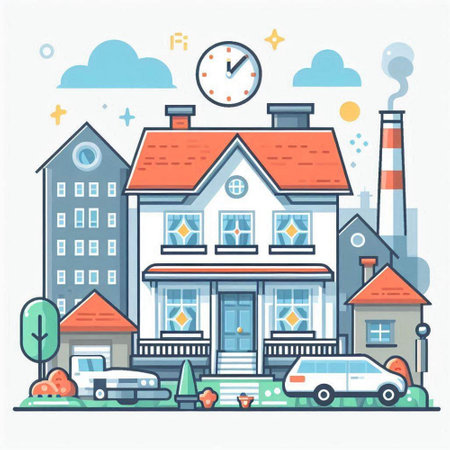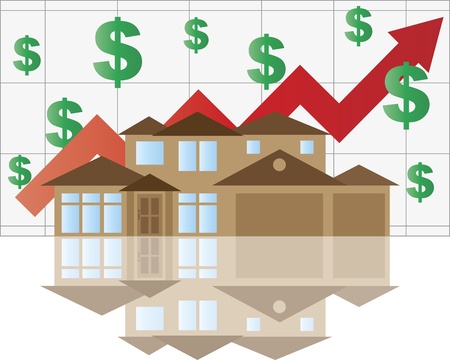Crafting an Irresistible Open House Experience
In today’s competitive U.S. real estate market, successful agents know that hosting an open house isn’t just about unlocking the door and hoping for the best. It’s about creating a captivating experience that makes prospective buyers feel at home the second they walk through the door. Seasoned agents go beyond simply showcasing square footage—they curate spaces that invite conversation, spark imagination, and encourage emotional connection. From staging rooms to highlight lifestyle potential to playing background music that sets a welcoming tone, every detail is intentional. Real estate pros also use local touches—like featuring neighborhood snacks or spotlighting community amenities—to make visitors envision their future lives in the property. By crafting memorable moments and engaging all five senses, agents transform an ordinary open house into a must-have opportunity, increasing both foot traffic and the likelihood of receiving strong offers.
2. Next-Level Digital Marketing Strategies
In today’s fast-paced real estate market, simply putting a sign in the yard won’t cut it. Top-performing agents leverage advanced digital marketing strategies to make their open houses stand out and attract serious buyers. Here’s how savvy realtors use cutting-edge platforms and targeted online campaigns to drive buzz and foot traffic:
Social Media Campaigns That Reach the Right Audience
Platforms like Facebook, Instagram, and even TikTok have become essential tools for realtors. Agents create eye-catching posts, engaging Stories, and live video tours to generate excitement before the open house even begins. Paid social campaigns allow them to zero in on local buyers who match specific demographics and interests—think families looking for more space or young professionals seeking urban condos.
Targeted Online Ads: Precision Matters
Digital advertising goes far beyond generic banner ads. Realtors use geo-targeted ads on Google and social media that appear only to users within a certain radius of the property or who have shown interest in similar listings online. Retargeting ensures that anyone who has previously viewed the listing will see reminders about the upcoming open house, nudging them closer to a visit.
Popular Listing Platforms: Where Buyers Are Searching
The days of relying solely on MLS are over. Agents maximize exposure by featuring properties across multiple high-traffic real estate platforms. The table below shows how different platforms serve unique buyer segments:
| Platform | Main Audience | Key Features |
|---|---|---|
| Zillow | General buyers, nationwide reach | Virtual tours, Open House scheduling, extensive filters |
| Realtor.com | Serious homebuyers, relocation seekers | Detailed property data, map-based searches, mobile alerts |
| Redfin | Tech-savvy and value-driven buyers | Commission rebates, interactive maps, agent ratings |
| Nextdoor | Local community members | Neighborhood-based targeting, hyperlocal exposure |
| Facebook Marketplace | Younger buyers, renters transitioning to ownership | Quick messaging, shareability among friends/groups |
By combining these digital tactics with traditional marketing methods, real estate agents dramatically increase both online engagement and actual attendance at open houses—turning clicks into clients and listings into sales.

3. Local Outreach and Community Buzz
One of the most effective ways real estate agents market open houses is by leveraging local outreach to create genuine excitement in the neighborhood. Instead of relying solely on digital ads or generic flyers, savvy agents understand that foot traffic often starts with word-of-mouth buzz right where the property is located.
Neighborhood Networking: Tapping Into Local Connections
Agents frequently walk the neighborhood days before the open house, introducing themselves to residents and sharing personal invitations. This approach not only builds rapport but also encourages neighbors to spread the word organically—after all, people love knowing who might become their new neighbor. By nurturing these connections, agents turn locals into advocates for the event.
Partnering With Local Businesses
Collaboration with nearby businesses is another winning strategy. Whether it’s a popular coffee shop providing refreshments or a florist offering arrangements for staging, these partnerships create a win-win situation: businesses get exposure, while open houses feel more welcoming and community-driven. It’s common for agents to showcase local brands at their events, further rooting the listing in its unique location.
The Power of the Community Grapevine
No one knows what’s happening in a neighborhood better than its residents. Agents make a point to engage with HOA boards, community Facebook groups, and local influencers who can help amplify their message. By tapping into these trusted channels, they ensure news of the open house spreads quickly and authentically—leading to increased attendance and often, higher offers.
4. Timing and Scheduling Secrets
One of the most critical—and often underestimated—components of successful open house marketing is timing. Experienced real estate agents know that when you host your open house can make or break your turnout. It’s not just about picking a day; it’s about choosing the right hour and aligning with buyer behavior in your local market. Let’s dive into how top agents use timing as a strategic advantage.
Understanding Buyer Patterns
Agents meticulously analyze when their target buyers are most likely to be available and motivated to attend. For example, families with children may prefer weekends after morning activities, while young professionals might be more flexible on weekday evenings. The goal is always to catch serious buyers at their most convenient moments.
Popular Open House Times by Buyer Type
| Buyer Profile | Preferred Days | Optimal Time Slots |
|---|---|---|
| Young Professionals | Weekdays (Thurs/Fri) | 5:00 PM – 7:00 PM |
| Families with Kids | Weekends (Sat/Sun) | 11:00 AM – 2:00 PM |
| Retirees/Empty Nesters | Weekdays or Weekends | 10:00 AM – 12:00 PM |
The Power of Local Events and Seasonality
Savvy agents also consider community calendars, holidays, and even weather forecasts. Scheduling an open house just before a popular neighborhood event can drive foot traffic, while avoiding major holidays prevents competition for buyers’ attention. In markets with harsh winters or scorching summers, midday hours are often favored for comfort.
Insider Scheduling Techniques That Work
- Double Up: Hosting multiple open houses back-to-back on the same day creates urgency and increases exposure.
- Peak Hour Targeting: Scheduling during high-traffic times in the area—like after church services or youth sports games—maximizes visibility.
- Twilight Opens: Evening open houses showcase stunning sunset views or outdoor lighting features, appealing to lifestyle-focused buyers.
- Avoid Overlap: Agents coordinate with other listings to avoid overlapping open houses, ensuring each property gets maximum attention.
The Takeaway: Strategic Scheduling Drives Results
The best real estate pros don’t leave open house timing to chance. They leverage local insights, buyer demographics, and even hourly trends to ensure every showing hits when it matters most—ultimately driving higher attendance and better offers.
5. Follow-Up Tactics That Convert Browsers to Buyers
What happens after the last guest leaves an open house can make all the difference in turning casual browsers into serious buyers. Top real estate agents know that follow-up is where deals are won or lost, and they use a blend of technology, timing, and personal touch to stand out.
Personalized Communication: Making Every Lead Count
Rather than relying on generic emails, savvy agents send personalized messages that reference specific conversations or interests expressed during the open house. Whether it’s a quick thank-you text, a tailored email with additional property details, or a follow-up call to answer questions, these gestures show genuine interest and professionalism. In today’s competitive market, it’s not just about speed—it’s about relevance and building rapport.
Strategic Use of CRM Tools
American realtors leverage robust Customer Relationship Management (CRM) systems to organize attendee information and track interactions. These tools help agents segment leads based on buying timelines and preferences, ensuring that follow-ups are timely and targeted. For example, an agent might send neighborhood market updates to buyers who seemed undecided or schedule private showings for those ready to make a move.
Client-Focused Value Adds
To further nurture interest, leading agents often provide value-added content such as digital brochures, mortgage calculators, or curated lists of comparable properties. They also proactively address any concerns raised during the open house, positioning themselves as trusted advisors who put client needs first. This client-first approach fosters trust and keeps the conversation going long after the event.
The most successful open house marketing doesn’t end when the front door closes—instead, it continues with thoughtful, strategic follow-up that turns curiosity into commitment and browsers into happy homeowners.
6. Leveraging Staging and Professional Presentation
If you want to capture the attention of American homebuyers, simply listing a property isn’t enough—presentation is everything. Top real estate agents understand that first impressions are made within seconds, both online and at the open house itself. That’s why staging, curb appeal, and professional media production have become non-negotiable tools in their marketing arsenal.
The Power of Staging
Careful staging transforms a house into a welcoming, move-in-ready home. Agents work with professional stagers to declutter, rearrange furniture, and add tasteful décor that highlights the property’s best features. This process not only maximizes the perceived space but also helps buyers envision their own lives unfolding in each room. In the U.S., staged homes statistically sell faster and for higher prices than unstaged ones—a fact savvy agents use to their advantage.
Curb Appeal: Creating a Lasting First Impression
Before buyers even step inside, curb appeal sets the tone. Agents coordinate landscaping touch-ups, fresh paint, and updated entryways to ensure the exterior is as inviting as the interior. In many American neighborhoods, a manicured lawn or colorful flowerbeds can be the difference between a drive-by and a showing request. Every detail counts when it comes to making an unforgettable first impression.
Professional Photography and Videography
With most buyers starting their search online, high-quality visuals are crucial. Agents invest in professional photography and videography—including 3D tours and drone footage—to showcase the property in its best light across MLS platforms and social media channels. These compelling images create excitement before anyone even walks through the door, driving more traffic to open houses and increasing the chances of multiple offers.
By leveraging staging, boosting curb appeal, and using professional-grade media, real estate agents give listings the polish needed to stand out in America’s competitive market—and ultimately deliver results for their clients.


